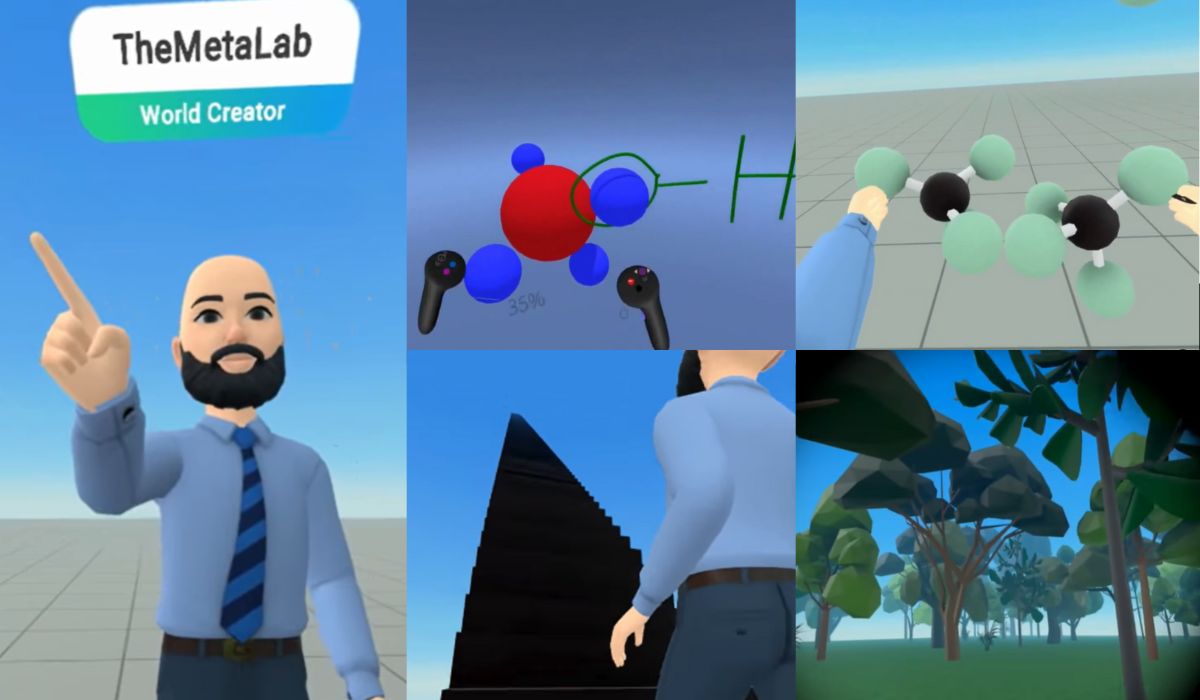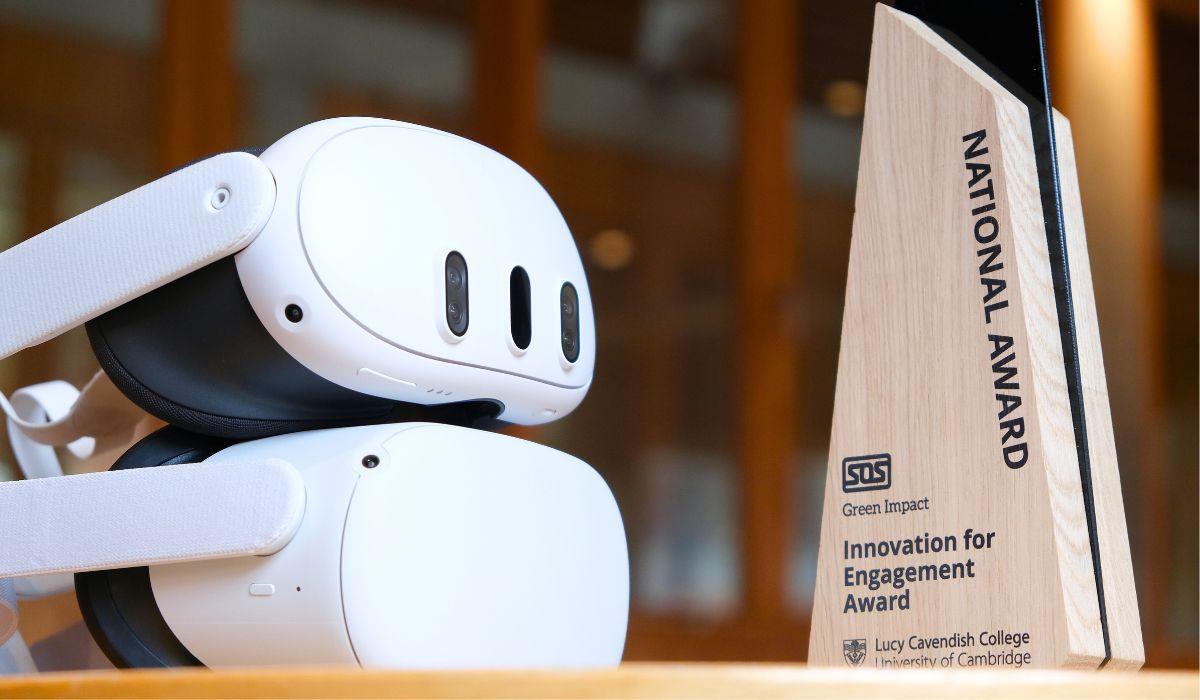The judges praised the College for using creative and innovative techniques to not only educate students but to empower them to drive positive change.
At Lucy Cavendish College’s multi-award-winning Meta Lab, we experiment with emerging digital technology to create transformational experiences. Our launch project was called Making the Invisible Visible.
The project was a response to the fact that it can be challenging to communicate climate change to the general public: the terminology can be confusing, the way in which we measure emissions can be non-intuitive, and there is a range of complicated psychological barriers (e.g. present bias, availability heuristic, pseudoinefficacy). The danger is that climate change can appear distant, insurmountable, or worse still, non-existent. A key part of the challenge is that with the human eye, we cannot see the accumulation of greenhouse gases in our atmosphere. As a result, we wanted to leverage emerging tech to better translate and visualise emissions data; we wanted to make the invisible visible.
Throughout the project, we explored multiple technologies and approaches, such as creating dynamic infographics with animations and creating visual metaphors and analogies with artificial intelligence. The most effective method thus far involves the use of virtual reality. For example, we translated emissions data into height and then used that to create 3D representations of emissions in metaverse environments and virtual classrooms. This not only helped to simplify and visualise the data, but it also helped to make it interactive where students could, for example, ‘climb’ the emissions of common products. We also created additional virtual environments where students could ‘traverse’ land use metrics or ‘hold’ greenhouse gases.

Last year, the project was submitted to Cambridge University’s Green Impact Awards where it received the regional award for innovation. Each year, the top five regional winners are entered into the national awards, and last month, it was revealed that we won.
The judges commended the project for its creative approach and dedication to making environmental concepts accessible and compelling. The judges noted that we used “innovative strategies to not only educate but also empower individuals to make informed choices and drive positive change.” The project seemed to resonate with the wider public: screen recordings of the project received over 100,000 views on social media in a single month. The judges noted “by leveraging various platforms and mediums, including social media and science communication workshops, they achieved remarkable engagement and outreach.”
Lab Director, Dr Chris Macdonald, says, “We were delighted to receive the national innovation award. To gain such recognition for our launch project is a great sign for things to come. We cannot wait to share more of our research with you at our exhibit at the ExCel Centre in London (dates announced shortly).”




